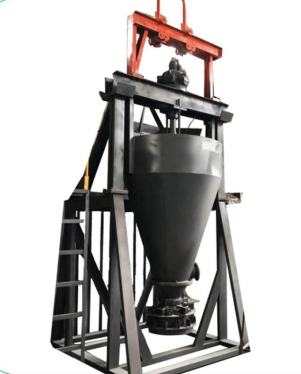Rotary Gunning Machines: Technological Evolution and Industrial Applications in High-Temperature Sectors
1. Introduction
Rotary gunning machines have emerged as indispensable equipment in high-temperature industrial maintenance, revolutionizing the repair and protection of refractory linings across metallurgy, building materials, chemical, and power sectors. With over five decades of development, these machines have evolved from basic manual operations to intelligent systems integrated with IoT and AI technologies, significantly enhancing operational efficiency, material utilization, and environmental performance . This article examines the working mechanisms, application scenarios, technological advancements, and future trends of rotary gunning machines, highlighting their critical role in sustaining industrial productivity.
Material Feeding: Refractory mixtures (dry, semi-dry, or wet) are loaded into a vibrating hopper, filtered through screens, and fed into rotating material chambers .
Pneumatic Conveying: ABB frequency converters regulate rotor speed (adjustable output: 1-3 m³/h), ensuring uniform material distribution into delivery pipelines driven by compressed air .
Atomization and Mixing: Near the spray gun, accelerators or water (for semi-dry/wet processes) are injected through pre-dampening nozzles, creating a homogeneous mixture with moisture content controlled at ~12% .
Rotary Spraying: The spray head rotates 360° to achieve uniform coverage, eliminating blind spots. Advanced models integrate laser scanning for ±3mm precision positioning .
Drive System: Variable frequency drives (VFDs) enable stepless speed regulation, optimizing material output based on lining thickness requirements.
Sealing Mechanism: Pressure rubber wheels prevent material leakage, critical for maintaining consistent conveying pressure .
Intelligent Controls: 5G+Beidou positioning modules and AI trajectory planning algorithms reduce material waste by 15% .
3.2 Building Materials and Chemical Sectors
3.3 Power Generation

4. Technological Advancements and Performance Improvements
4.2 Intelligent Upgrades
Remote Monitoring: Real-time data feedback reduces maintenance costs by 22% .
Precision Spraying: 3D trajectory planning boosts material utilization from 50% to 92% .
Automation: Robotic spray guns with cm-level positioning enable "hot repair" without facility shutdowns .
4.3 Material Science Breakthroughs
5. Market Trends and Future Outlook
5.2 Regional Differentiation
Developed Markets: prioritize high-end intelligent models (e.g., IoT-integrated systems costing>$500k) for aerospace and power sectors .
Emerging Economies: India and Vietnam focus on cost-effective standard models (<$50k) for basic metallurgical applications .
Deep Intelligence: 60% of machines will be connected by 2030, with AI enabling predictive maintenance .
Sustainable Design: EU’s "Green Deal" mandates 40% energy reduction by 2030, pushing development of low-power systems .
Cross-Industry Integration: 3D printing-spraying hybrid technology will create $8 billion in incremental market value .
6. Conclusion